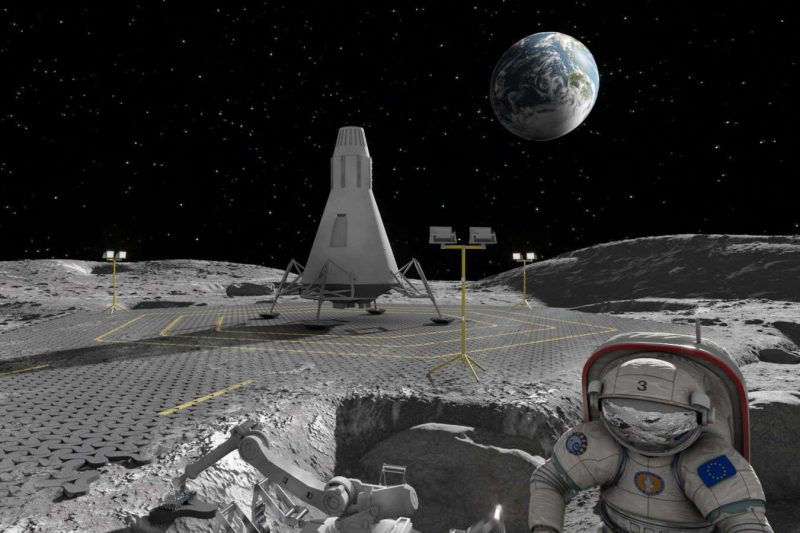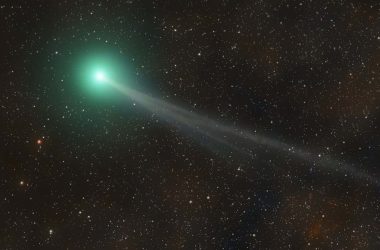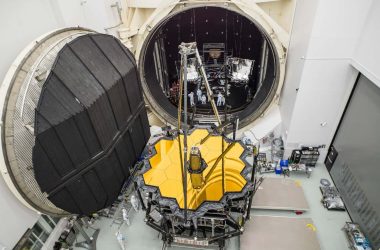Illustration of a paved road and landing pad on the lunar surface
Liquifer Systems Group
Lunar dust could revolutionize transportation on the moon by being melted into paving slabs to create roads, providing easier access across its surface.
The team at Aalen University in Germany, led by Miranda Fateri, used a powerful 12-kilowatt laser to heat a powder made of plagioclase, olivine, and pyroxene, which serves as a substitute for lunar dust.
Melting Lunar Dust for Road Construction
Under intense heat at a temperature of 1200°C, the lunar dust underwent compaction and transformed into a black, glass-like structure with a compression strength comparable to that of concrete. This innovative approach offers the potential to use the material as a road surface, significantly easing transportation on the moon.
Fateri says, “It makes transport on the moon easier.”
Using Sunlight Instead of Lasers
While utilizing a laser on the moon may present challenges, Fateri and her team suggest an alternative approach. They calculate that a 1.5-metre-wide lens could be used to focus sunlight and achieve the same effect. This method could simplify the construction process.
Up until now, previous experiments have used lasers to compact simulated lunar soil. However, Fateri’s team used a wider 10-centimetre-wide beam, making it the most extensive beam used in such experiments.
The Creation of Lunar Roadways
To demonstrate the potential road construction, the researchers used the laser to create interlocking triangle shapes from the lunar soil. These triangle shapes, measuring 25 centimetres on each side, can be arranged on the moon’s surface like tiles to construct roads that vehicles could drive over. This not only enhances mobility on the moon but also prevents lunar dust from being kicked up and causing damage to equipment.
Expanding Applications
Besides paving roads, Fateri and her team are investigating whether their material could also be utilized for landing or launch pads on the moon. The loose lunar soil creates dust when landing, requiring the need for stable landing pads. This material offers potential solutions for improved lunar landings.








